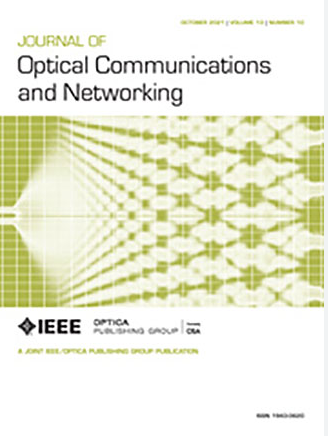Space optical communication system for space optical networks and deep space exploration
IF 4
2区 计算机科学
Q1 COMPUTER SCIENCE, HARDWARE & ARCHITECTURE
引用次数: 0
Abstract
The acquisition time of tens to hundreds of seconds in the optical link between satellites makes it difficult to meet the needs of constructing spatial optical networks. In addition, as a basic requirement for deep space explorers, autonomous attitude determination and autonomous navigation demand the installation of separate, expensive, and complex inertial devices, and the communication data rate is too low to meet the timely transmission of large amounts of data. In this paper, we proposed and developed a multifunctional fusion space optical communication system for space optical networks and deep space exploration, which has the functions of autonomous attitude determination, autonomous navigation, and high-speed optical communication. The sub-second acquisition time can meet the requirements of space optical network construction, and the ability of autonomous attitude determination and autonomous navigation significantly reduce the amount of R&D expenses of the explorer; decrease the volume, weight, and power consumption of the explorer; and improve the reliability and autonomous survival ability of the explorer. The paper provides the structure, working principle, and main algorithm models and conducts a feasibility analysis and field experiments. The experimental results showed that the average open-loop pointing accuracy of the optical terminal is 95.8 µrad (attitude determination accuracy), which can be improved to 39.1 µrad after filtering, and the acquisition time is less than 1 s. For deep space exploration, the navigation accuracy is less than 67.6 km in the cruise phase and 10 km in the acquisition phase, and field experiments have also proven its feasibility. The significance of our research work lies in proposing what we believe to be a new system operation scheme and design method for optical communication systems, and its results can be widely applied in all fields of space optical communication.用于空间光网络和深空探索的空间光通信系统
卫星间光链路的采集时间长达几十秒到几百秒,难以满足空间光网络建设的需要。此外,作为深空探测者的基本要求,自主姿态确定和自主导航需要安装独立、昂贵、复杂的惯性设备,而通信数据速率太低,无法满足大量数据的及时传输。本文针对空间光网络和深空探测,提出并研制了一种多功能融合空间光通信系统,该系统具有自主姿态确定、自主导航和高速光通信功能。亚秒级的采集时间可以满足空间光网络建设的要求,自主姿态确定和自主导航能力大大降低了探索者的研发费用,减少了探索者的体积、重量和功耗,提高了探索者的可靠性和自主生存能力。本文提供了该系统的结构、工作原理和主要算法模型,并进行了可行性分析和现场实验。实验结果表明,光学终端的平均开环指向精度为 95.8 µrad(姿态确定精度),滤波后可提高到 39.1 µrad,采集时间小于 1 s;对于深空探测,巡航阶段的导航精度小于 67.6 km,采集阶段的导航精度小于 10 km,现场实验也证明了其可行性。我们的研究工作的意义在于提出了我们认为是光通信系统的一种新的系统运行方案和设计方法,其成果可广泛应用于空间光通信的各个领域。
本文章由计算机程序翻译,如有差异,请以英文原文为准。
求助全文
约1分钟内获得全文
求助全文
来源期刊
CiteScore
9.40
自引率
16.00%
发文量
104
审稿时长
4 months
期刊介绍:
The scope of the Journal includes advances in the state-of-the-art of optical networking science, technology, and engineering. Both theoretical contributions (including new techniques, concepts, analyses, and economic studies) and practical contributions (including optical networking experiments, prototypes, and new applications) are encouraged. Subareas of interest include the architecture and design of optical networks, optical network survivability and security, software-defined optical networking, elastic optical networks, data and control plane advances, network management related innovation, and optical access networks. Enabling technologies and their applications are suitable topics only if the results are shown to directly impact optical networking beyond simple point-to-point networks.

 求助内容:
求助内容: 应助结果提醒方式:
应助结果提醒方式:


